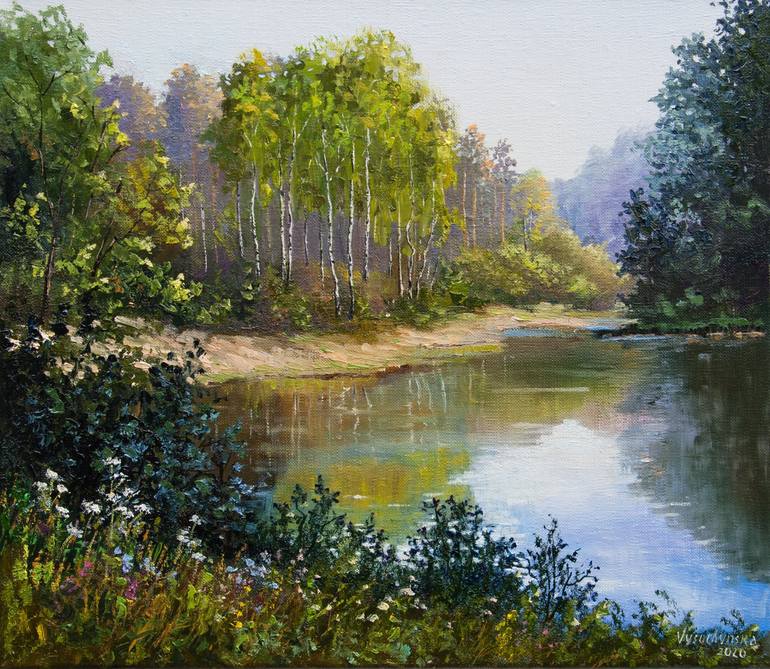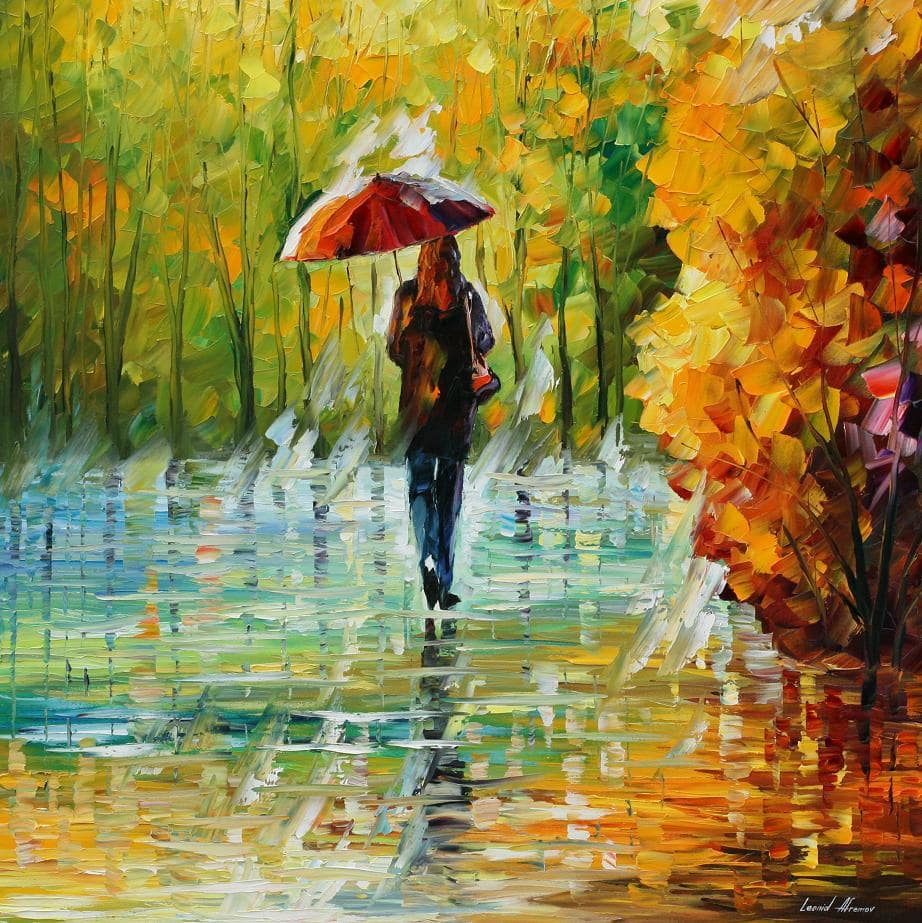Browse Handpicked Sets of Oil Paintings for Sale
Browse Handpicked Sets of Oil Paintings for Sale
Blog Article
Discovering All About Oil Paintings: An Overview to Recognizing Their Elegance and Worth
Oil paints have mesmerized target markets for centuries, supplying a glance right into the imaginative mastery of various eras. Their abundant background is linked with innovative techniques and extensive psychological expression. Comprehending the materials and techniques behind these artworks can boost gratitude. In addition, the marketplace for oil paintings offers possibilities for investors and enthusiasts alike. As one discovers this interesting globe, the inquiry arises: what makes an oil painting really valuable?
The Background of Oil Painting: A Trip With Time
Although oil painting has roots that go back to ancient times, it truly prospered during the Renaissance, when artists uncovered its adaptability and abundant shade potential. Early examples can be traced to the 7th century, with strategies evolving especially throughout societies. The medium came to be prominent in Northern Europe in the 15th century, especially via the works of artists like Jan van Eyck, who originated its use for detailed realistic look and vibrant tones. This period marked a departure from tempera paints, permitting for higher depth and appearance. As oil paint spread, it affected numerous artists, leading to work of arts by prominent numbers such as Leonardo da Vinci and Rembrandt. The medium's heritage proceeds, shaping the art world well into modern-day times.
Understanding Oil Paints: Products and Techniques
As musicians explore the world of oil paints, they come across a varied variety of materials and methods that specify this tool. The primary components of oil paint include pigments, which supply shade, and drying out oils, such as linseed, that bind the pigments and assist in application. Numerous additives can customize the paint's structure and drying out time, boosting flexibility. Techniques like glazing, where transparent layers are accumulated, and impasto, which includes using thick paint, enable for different visual impacts. Additionally, making use of brushes, palette knives, and even fingers can develop unique textures and finishes. Understanding these materials and methods enables artists to totally reveal their imagination and accomplish the preferred impact in their artwork.
The Role of Color in Oil Paintings
Shade plays a critical duty in oil paintings, affecting both aesthetic charm and emotional vibration. Recognizing shade theory basics, consisting of the relationships in between colors, can enhance a musician's capacity to communicate mood and ambience. Furthermore, mastering shade mixing strategies permits greater depth and splendor in a painting's palette.

Color Concept Essential
Comprehending color concept is vital for musicians dealing with oil paints, as it creates the structure for creating aesthetically interesting and unified compositions. Shade concept incorporates the study of how colors interact, the shade wheel, and the partnerships in between primary, additional, and tertiary shades. Musicians use complementary colors to improve contrasts and develop focal points, while similar shades advertise unity and cohesiveness within a piece. Additionally, the ideas of amazing and warm colors influence the understanding of depth and room in a paint. Understanding these principles allows artists to control shade efficiently, guiding the customer's eye and communicating their designated message. Proficiency of color concept ultimately enhances an artist's capacity to convey feelings and ideas via their work.
Psychological Effect of Color
The psychological effect of shade in oil paints plays a vital role in exactly how customers link and view with art work. Colors evoke details sensations and state of minds, affecting the visitor's emotional state. For example, cozy shades like reds and oranges can develop a feeling of heat and energy, while great tones such as blues and greens typically stimulate peace or self-contemplation. Artists strategically choose shade palettes to improve narrative components, guiding the audience's emotional journey. The saturation and contrast of colors further magnify these results, attracting focus and developing emphasis. Ultimately, the interplay of colors in oil paints not just enhances their aesthetic charm yet additionally acts as a powerful tool for emotional expression, enriching the audience's experience and interpretation.
Color Mixing Techniques
While numerous aspects of oil paint add to the general structure, mastering shade mixing techniques is vital for achieving desired results and depth. Color mixing can be come close to via different methods, including the additive and subtractive processes. Additive blending includes combining shades of light, while subtractive blending counts on pigments, where shades blend to create brand-new tones. Artists frequently utilize a minimal scheme to produce unified works, comprehending the connections between primary, second, and tertiary colors. Strategies such as glazing and scumbling additionally enhance deepness and luminosity. By masterfully mixing shades, an artist can stimulate emotions, develop prime focus, and accomplish a sense of realistic look, ultimately boosting the painting's psychological and aesthetic influence.
Famous Oil Painters and Their Iconic Works

Well known for their mastery of color and method, oil painters have produced several of the most celebrated artworks in history. Popular musicians like Vincent van Gogh astounded target markets with his emotive brushwork in "Starry Evening," while Claude Monet's "Impact, Sunrise" laid the foundation for Impressionism. Leonardo da Vinci's "Mona Lisa" continues to be an enduring sign of imaginative genius, showcasing his skill in catching human expression. Rembrandt's "The Night Watch" highlights his cutting-edge usage of light and darkness. Various other noteworthy figures include Pablo Picasso, who transformed contemporary art with his strong testing in works like "Les Demoiselles d'Avignon," and Georgia O'Keeffe, whose vibrant depictions of flowers and landscapes aided specify American innovation. Each artist's distinct style contributed greatly to the oil paint landscape.
Just how to Examine the Top Quality of an Oil Paint
Examining the quality of an oil painting entails a cautious assessment of craftsmanship strategies, in addition to an analysis of shade and structure. Observing brushwork, layering, and the application of paint can disclose the musician's skill degree. Furthermore, the interplay of shades and the general arrangement of components contribute considerably to the painting's visual worth.
Assessing Craftsmanship Techniques
A meticulous evaluation of workmanship strategies is important for identifying the quality of an oil paint. Evaluators should first examine the application of paint; thick, distinctive brushstrokes might recommend a skilled hand, while extremely uniform applications can indicate a lack of depth. oil paintings for sale. The layering technique is additionally crucial; the presence of glazes and varied density can enhance luminosity and complexity. Furthermore, the high quality of the products made use of, such as the canvas and pigments, plays a substantial role in longevity and general aesthetic. Interest to detail in components like sides and changes between shades mirrors the artist's commitment to their craft. Inevitably, these strategies add to the paint's psychological impact and market price, working as signs of the musician's skill and intent
Examining Shade and Structure
While evaluating the top quality of an oil painting, one need to focus on the interaction of color and make-up, as these aspects are basic to the artwork's general impact. Shade selections can evoke feelings and establish mood; as a result, the artist's palette should be analyzed for harmony and comparison. A healthy make-up routes the viewer's eye and creates a sense of unity. Artists typically utilize methods like the policy of thirds or leading lines to improve aesthetic rate of interest. In addition, the usage of light and darkness can add depth, boosting the three-dimensionality of the paint. Ultimately, a successful oil painting marries color and composition, involving the audience and inviting a deeper appreciation of the artist's vision and technique.
Caring for and Preserving Oil Paintings
Correct treatment and conservation of oil paintings is vital for preserving their integrity and longevity. To shield these art work, it is crucial to show them away from direct sunshine, which can cause fading and staining. Preserving a steady environment with regulated temperature level and humidity further help in protecting against damage. Cleaning need to be done delicately utilizing a soft, dry cloth, staying clear of any type of harsh chemicals that can hurt the paint or varnish. Regular inspections for signs of deterioration, such as splitting or flaking, are recommended. When carrying or keeping oil paintings, proper extra padding and framework are needed to prevent physical harm. Ultimately, attentive treatment adds to the visual appeal and worth of oil paintings with time.
The Market for Oil Paints: Investing and gathering
Understanding the market characteristics for oil paintings is crucial for investors and collection agencies alike. The worth of these art work is influenced by different variables, including the artist's online reputation, historical relevance, and existing patterns. Enthusiasts frequently look for items that reverberate personally while considering potential admiration in value. Galleries and auctions offer as key locations for buying and selling, with costs varying based upon need and rarity. Buying oil paints requires research into the market, in addition to an understanding of credibility and provenance. Furthermore, arising musicians might use chances for significant returns, while established names can command high rates. Generally, a strategic method to gathering can produce both aesthetic enjoyment and monetary benefits.

Regularly Asked Inquiries
What Are the Environmental Effects of Oil Paint Products?
The ecological impacts of oil painting materials include the launch of unpredictable natural substances (VOCs), dangerous waste generation, and source extraction for pigments. These elements add to air pollution and eco-friendly destruction, raising concerns among ecologically mindful artists and consumers.
Exactly How Do Different Canvases Impact Oil Paint Outcomes?
Various canvases influence oil painting results significantly. Surface, absorbency, and texture quality can alter paint application, drying times, oil paintings for sale and shade vibrancy. Musicians usually pick details canvases to attain wanted effects and boost their imaginative expression.
Can Oil Paintings Be Recovered if Damaged?
If damaged, Oil paintings can certainly be brought back. Expert conservators make use of different techniques to repair splits, clean surface areas, and address staining, making sure that the artwork keeps its initial beauty and worth for future generations.
What Are the Indicators of an Original Oil Painting?
The indicators of an initial oil painting include noticeable brush strokes, texture variants, and an unequal canvas weave (oil paintings for sale). In addition, credibility may be validated via provenance, signatures, and the visibility of a varnish layer special to oil tools
How Has Technology Influenced Modern Oil Paint Techniques?
Technology has actually considerably influenced contemporary oil paint methods by presenting digital tools for planning, boosted products for structure and durability, and on-line systems for offering and sharing art, thereby increasing artists' innovative possibilities and audience reach. Oil paint has roots that date back to ancient times, it absolutely grew during the Renaissance, when artists discovered its versatility and abundant color capacity. The psychological influence of shade in oil paints plays a crucial role in just how visitors link and view with art work. While lots of facets of oil painting contribute to the overall structure, mastering shade blending techniques is vital for attaining preferred results and depth. Examining the high quality of an oil paint involves a careful analysis of craftsmanship methods, as well as an analysis of shade and composition. While examining the top quality of an oil paint, one have to concentrate on the interplay of color and make-up, as these components are fundamental to the art work's general effect.
Report this page